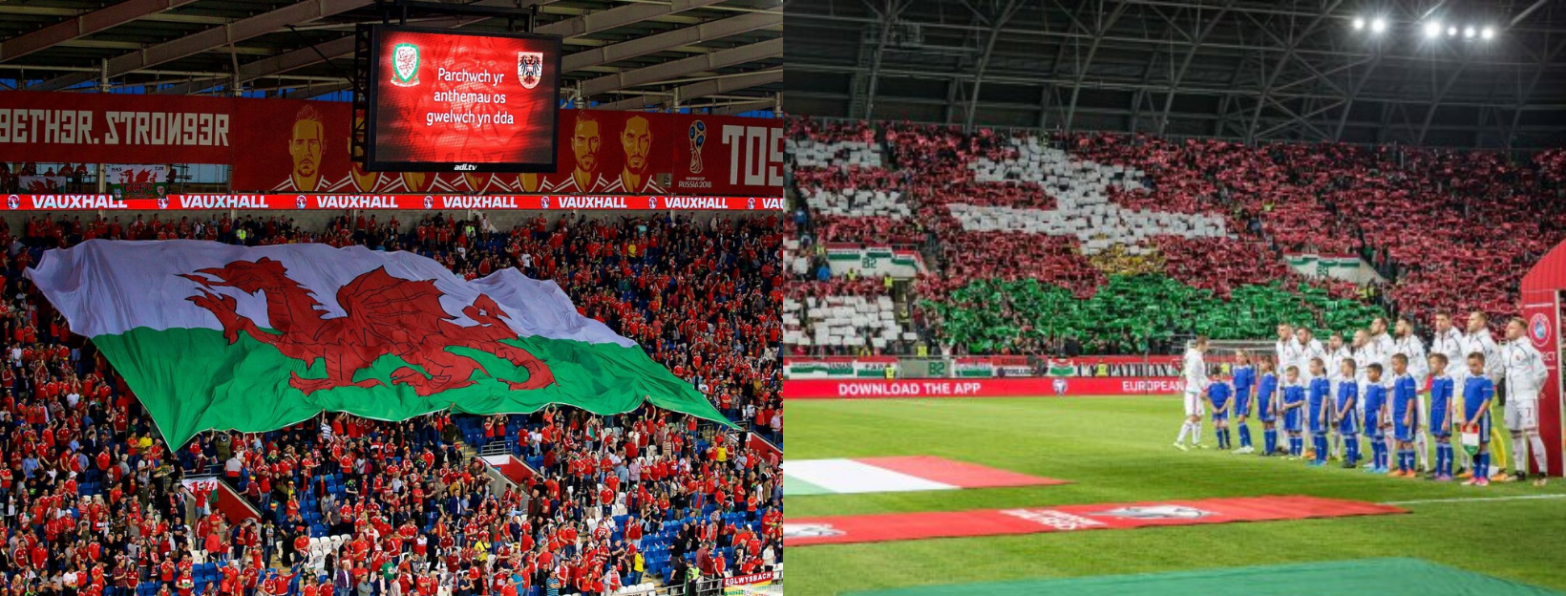Tomorrow night, Wales takes on Hungary for the historic Euro 2020 qualifier we’ve all been waiting for. While you probably know a thing or two about our rivals, there are a few common traits between our two nations that might take you by surprise!
No matter the result, here are five things we can celebrate together with our Hungarian friends, with a nod to our common interests and the quirky things that bring us closer than ever on this exciting day.
1. The bards of Wales… in Hungary?

If you ask any Hungarian about Wales, the first thing they’ll mention are the bards of Montgomery. That’s right! A popular poem about the legendary massacre of 500 Welsh bards has been taught in schools across Hungary for generations. Well-known Hungarian poet János Arany’s “The Bards of Wales” is all about King Edward’s invasion of Wales – or so it seems! Arany, whom many call the ‘Hungarian Shakespeare’, wrote the poem after refusing to celebrate the Austro-Hungarian emperor Franz Joseph following the failed Hungarian revolution in 1848, yet he disguised the 19th century ballad as a story about Edward’s visit to Montgomery Castle to bypass the Austrian censors.
The news about the existence of “A walesi bárdok” took Wales by storm, prompting the Mayor of Montgomery, Powys, to posthumously recognise the poet as a “Freeman of Montgomery”. An English copy of the poem has been donated to the National Library of Wales in Aberystwyth, and an interactive animation of the legendary tale was projected onto the façade of St. John’s Church in Cardiff for all to enjoy. What’s more, Sir Karl Jenkins composed an entire symphony based on the poem! The piece became a big hit in both Wales and Hungary, with the world-renowned Welsh composer being recognised as an honorary citizen of Budapest.
2. Kings and castles

Wales will always have the most castles per capita in the world, but with over a hundred fairytale forts and castles across Hungary, this central European country offers plenty of chances to get your Mediaeval on! Hungarians are particularly proud of Visegrád Citadel in the north, the capital’s famous Buda Castle, and the castle of Eger, which saw a handful of Hungarian soldiers defend their land during the enormous Turkish attack of 1552. The Siege of Eger will be familiar to many in Wales, as this is the battle Hungarian writer Géza Gárdonyi paid homage to in his widely recognised novel ‘The Eclipse of the Crescent Moon’.
We’ve both had our fair share of cunning kings and precious poets whom, just like us, the Hungarians love telling stories about. So if you meet a Hungarian before kick-off, be sure to tell them about the splendid castles of Conwy and Caernarfon, Llywelyn the Great or Dafydd ap Gwilym. It will sure give you something else to talk about!
3. Red, white, green!

Not so much a surprise, but the Welsh and Hungarian flags are made up of the same three colours. The meanings behind them, however, tell a lot about our pride and passion for our homeland. On the Welsh flag, as we know so well, the red dragon of Cadwaladr sits proudly on a field of green. Meanwhile, the Hungarian red-white-green tricolour has been a sign of the nation’s sovereignty for centuries. The horizontal stripes each have a special meaning for Hungarians: red is for power and strength, white stands for loyalty and faithfulness, while green represents their hope for the future.
The colours might not mean the same, but we know one thing for sure… Dragon or stripes, we’ll paint the stadium red, white and green!
4. The Land of Song… and the land of folk songs!

We say Welsh people have two great passions: sports and singing. Combine the two and you get something truly beautiful. The moment when an entire stadium breaks into a song and the traditional hymns of Calon Lân and Cwm Rhondda come to life, it’s no surprise that Wales is known as the “Land of Song”!
Some might not understand this special feeling, but Hungarians sure will. Folk music has been at the heart of Hungary’s culture for centuries, with well-known composers like Kodály and Bartók all embracing the beauty of the authentic Hungarian folk song. From the Great Hungarian Plain to the Szekler-Csango communities in Transylvania (today in Romania) and beyond, you will find that folk music unites Hungarians the same way Calon Lân brings us closer together.
5. Building bridges

With so many reasons to celebrate, Hungarian and Welsh families come together every year in Cardiff to build bridges between our cultures with a fantastic celebration of everything Welsh and Hungarian. Held in the Urdd Hall of the iconic Wales Millennium Centre, the annual Welsh-Hungarian Concert and Folk Dance Event is now in its third year, with the fourth event set to take place on 14th March 2020 to tie in with St. David’s Day and one of Hungary’s national holidays. The concert series is organised by Hungarian-born classical singer Elizabeth Sillo and the Kodály Violin School of Carmarthenshire, directed by Dorothy Singh. Over the years, many acclaimed Welsh and Hungarian folk artists, the ‘1st Hungarian Hussar Banderium UK’ and members of the National Chorus of Wales have all joined the initiative, enriching the event with a wide range of performances from both cultures.
For the first time, Welsh-Hungarian events will take place at “both ends of the bridge,” the organisers have announced. Alongside the successful Cardiff event in March hosted by the local Hungarians, Welsh people with a passion for Hungary’s music and culture will welcome our Hungarian friends for a big bicultural festival in May 2020, in Carmarthen. And the list doesn’t end there. In rural southeast Hungary, singer Elizabeth Sillo – who is also behind Cardiff’s Welsh-Hungarian concerts – has performed Welsh hymns in recent years to introduce a bit of Wales’ culture in the Central European country, to the locals’ great delight.
Thanks to Welsh music enthusiasts in Hungary, the annual Dydd Miwsig Cymru (Welsh Language Music Day) has also spread as far as Budapest, where a range of Welsh pop bands have entertained the nation for several years. Next month, Wales’ very own Sir Bryn Terfel will pay a visit to the Hungarian capital, to captivate Budapest’s opera lovers with an extraordinary performance.
To keep up to date with these events and read even more fascinating Welsh-Hungarian facts and stories, follow Magyar Cymru on Facebook and Twitter (@MagyarCymru). Until then, let’s sit back and enjoy the big game against Hungary’s national team – it’s bound to be a good one!

